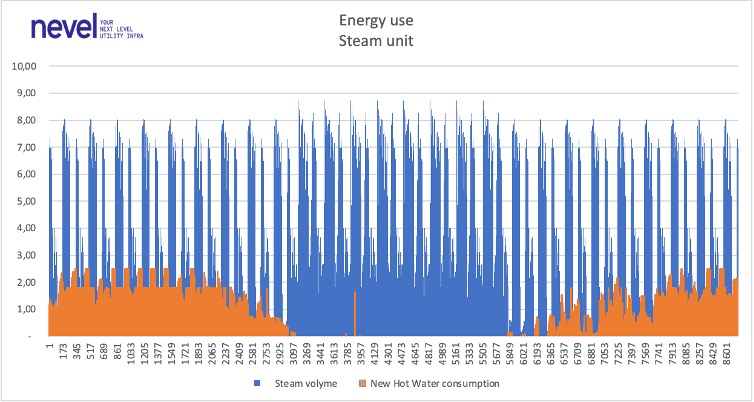Towards CO2 emission free energy production
May 31, 2022- InfraTalks – utility infrastructure insight

Esa Mörsky
Timely energy solutions ensure competitive advantage
For businesses, environmental legislation and related requirements and reporting consume time and resources. Keeping track of proposed new regulations and forecasting their impact can also be challenging. Most businesses focus solely on complying with current regulations and quick fixes rather than planning ahead to build a competitive edge.
Industry traditionally adjusts to changes in legislation and rising energy costs by increasing prices; focusing on future competitive advantages often receives little attention. Only by adopting a predictive and solution-centric approach can a business be genuinely competitive.
The challenge of being environmentally friendly
It is often said that the market is not ready to pay extra for green solutions. There is some truth in that, and it unfortunately results in a failure to find or develop optimal alternative solutions.
Companies that manage to improve both the efficiency of their energy production and their environmental impact eventually reach a win-win situation where customer expectations towards eco-friendliness are met and companies reach the best possible cost structure. Implementing efficient, environmentally friendly solutions requires courage.
Some also claim that clean energy projects introduce instability into the energy market. The truth is quite the opposite: controlled clean energy solutions reduce the instability of the energy market, increase alternative energy production and decrease our dependence on fossil energy.
Results through prediction
Factories typically track their energy consumption on a monthly or yearly basis, with costs allocated to the companies’ monthly expenses. A factory tracks consumption in relation to commodities or products produced.
While the share of energy costs as part of total costs has not been particularly significant in the past, today the situation has changed dramatically. Many companies have not necessarily been able to foresee this change, and the sharp increase in energy prices has taken them by surprise. Companies that have reacted early by creating environmentally friendly energy solutions can now increase production and grow their profits while others are forced to increase prices or reduce production.
Situational analysis forms the basis for planning change
Change is always a possibility but planning for change should always start from the basics. You need to map the current situation as accurately as possible and visualise the big picture.
To visualise energy consumption, we can use hourly averages or measure the company’s typical energy consumption for an agreed period and scale the results to a weekly, monthly or yearly level. The resulting analysis is a good foundation for planning change.

To visualise energy use, costs and CO2 emissions are added as accurately as possible in relation to the energy sources used. A situational analysis should reflect the actual structure as closely as possible.
When planning change, the following should also be considered:
- The company’s long-term strategy based on the factory’s sustainable development
- Analysing whether the sustainable development strategy requires changes
- Solving current environmental challenges
- Comparing and evaluating various solutions; any savings created are used in the project’s profitability evaluation
- Determining the best timing for the decision
- Options for implementing the change: outsourcing to a service provider or internal investment
- Cost efficiency of the change
It requires expertise and creativity to combine proven technical solutions into a single optimal solution. Optimal sizing and maintenance cycles require precise planning. Automation, machine-learning monitoring and remote use improve efficiency and deliver cost savings. Life cycle costs are often neglected when comparing projects even though operating expenses account for 80% of total costs while investment costs only account for 20%.
Towards CO2 emission free energy production
Creating environmentally friendly energy solutions produces long-term results while energy efficiency improves security of supply. When companies focus on efficiency and timely investments, their shareholder value increases.
Is your company ready to look ahead and build its own transition path towards CO2-neutral energy production? Our experience in the energy market gives us the confidence to create customer-centric solutions. Let us help you find the right solution for your business.
Esa Mörsky
Head of Concept
Nevel Oy
